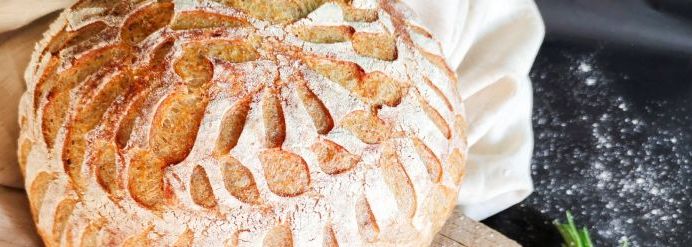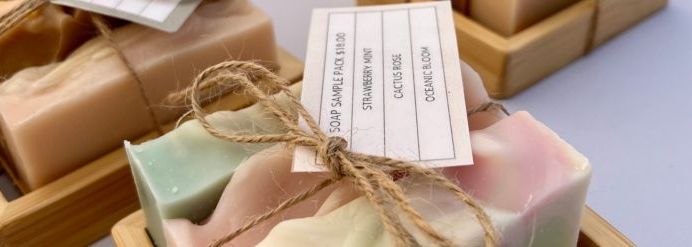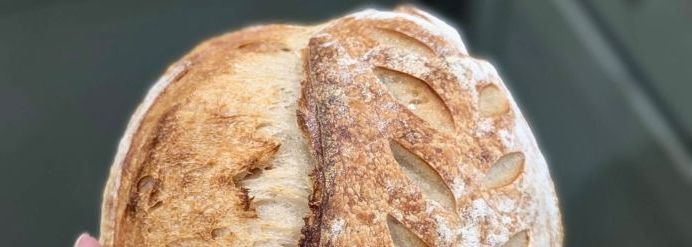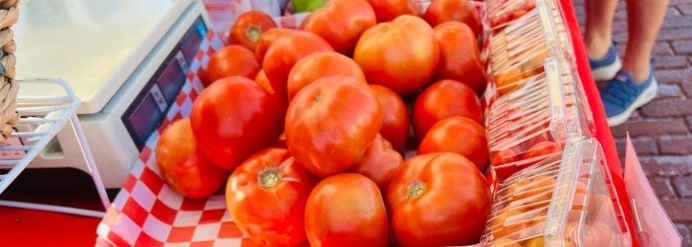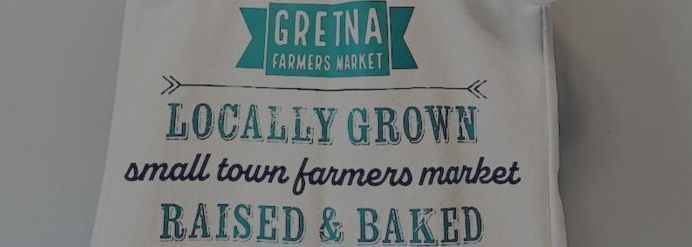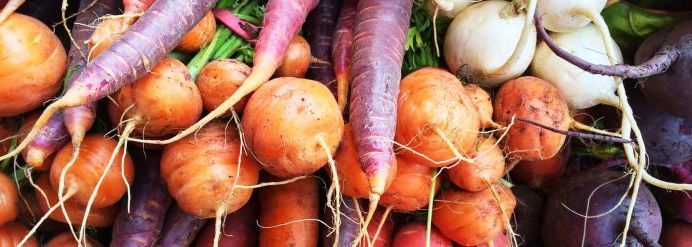Sourdough bread has a unique flavor and texture. It has been a staple in kitchens all over the world for centuries. This naturally leavened bread relies on wild yeast and lactic acid bacteria for fermentation — we know that sounds kind of gross, but it’s actually really cool. This artisanal baking process makes it a rewarding experience. Whether you’re a seasoned baker for your local farmers market or a novice looking to explore the world of sourdough, this guide will take you through the entire process, from creating a starter to baking your first loaf!
Creating a sourdough starter
The heart of sourdough bread is the starter, a mixture of flour and water that captures wild yeast and bacteria from the environment. Here’s how to create your own!
Day 1
Mix 1/2 cup of whole grain flour (such as rye or whole wheat) with 1/4 cup of water in a glass jar. Stir until combined, cover loosely and let it sit at room temperature for 24 hours.
Day 2
Add 1/2 cup of all-purpose flour and 1/4 cup of water to the mixture. Stir well, cover loosely and let it sit for another 24 hours.
Day 3-7
Repeat the feeding process every 24 hours. By day 4 or 5, you should start to see bubbles forming, indicating that fermentation is happening. The starter should have a pleasant, slightly tangy smell.
Maintenance
After day 7, your starter should be ready to use. Keep it in the refrigerator and feed it once a week if not baking regularly. To feed, discard half of the starter and add equal parts flour and water by weight. This may be tricky at first, but you’ll get the hang of it!
Preparing the dough
Once you have an active starter, you’re ready to make sourdough bread. Here’s a basic recipe to get you started!
Ingredients
1/4 cup (60g) active sourdough starter
1 1/4 cups (300g) water
3 cups (450g) all-purpose or bread flour
2 tsp (10g) salt
Mixing
In a large bowl, combine the starter and water. Add the flour and mix until a shaggy dough forms. Cover the bowl and let it rest for 30 minutes.
Kneading
After resting, sprinkle the salt over the dough and knead it for about 10 minutes until it becomes smooth and elastic. You can also use the stretch and fold method: stretch the dough out, fold it over itself, rotate and repeat.
Bulk fermentation
Place the dough in a lightly oiled bowl, cover and let it ferment at room temperature for 4-6 hours or until it has doubled in size. You can also do an overnight fermentation in the refrigerator for a deeper flavor.
Shaping and proofing
Shaping
Gently deflate the dough and shape it into a round or oval loaf. Place it seam-side up in a floured proofing basket or a bowl lined with a floured cloth.
Proofing
Cover the dough and let it proof for 2-4 hours at room temperature or overnight in the refrigerator. The dough should be puffy and slightly spring back when poked.
Baking the bread
Preheating
Preheat your oven to 450°F (230°C) with a Dutch oven or baking stone inside.
Scoring
Carefully turn the proofed dough onto a piece of parchment paper. Use a sharp knife or razor blade to score the top of the loaf with a few slashes. This allows the bread to expand during baking.
Baking
Transfer the dough, still on the parchment, into the preheated Dutch oven or onto the baking stone. Cover with the lid (if using a Dutch oven) and bake for 20 minutes. Remove the lid and bake for an additional 20-25 minutes or until the crust is deeply golden and the internal temperature reaches 210°F (99°C).
Cooling
Remove the bread from the oven and let it cool on a wire rack for at least an hour before slicing. This allows the crumb to set and develop its full flavor.
Enjoy your sourdough bread!
Congratulations, you’ve made your first sourdough loaf! Sourdough bread not only tastes amazing but also has a longer shelf life due to its natural fermentation. As you become more comfortable with the process, feel free to experiment with different flours, add-ins like seeds and nuts and variations in fermentation time to create your own unique sourdough.
Maybe you’re ready to try making your own sourdough, or maybe you prefer to buy at Gretna Farmers Market! Come to Downtown Gretna on McKenna Ave (directions and parking here). You can purchase sourdough bread from one of the many sourdough vendors, Brandemic Bakery, WildFlour BakingCo., Gold Mill Bakery, and The Baked Lady. See you this Saturday at the local farmers market!




